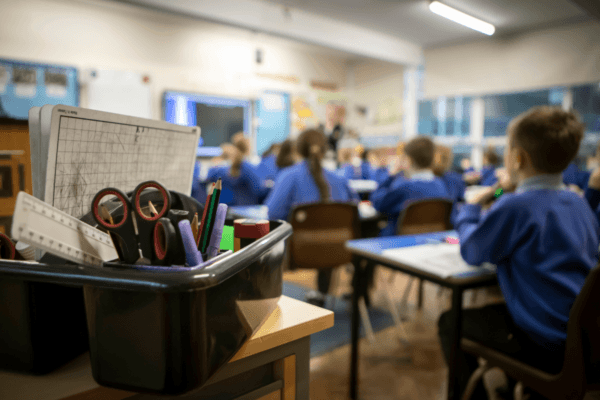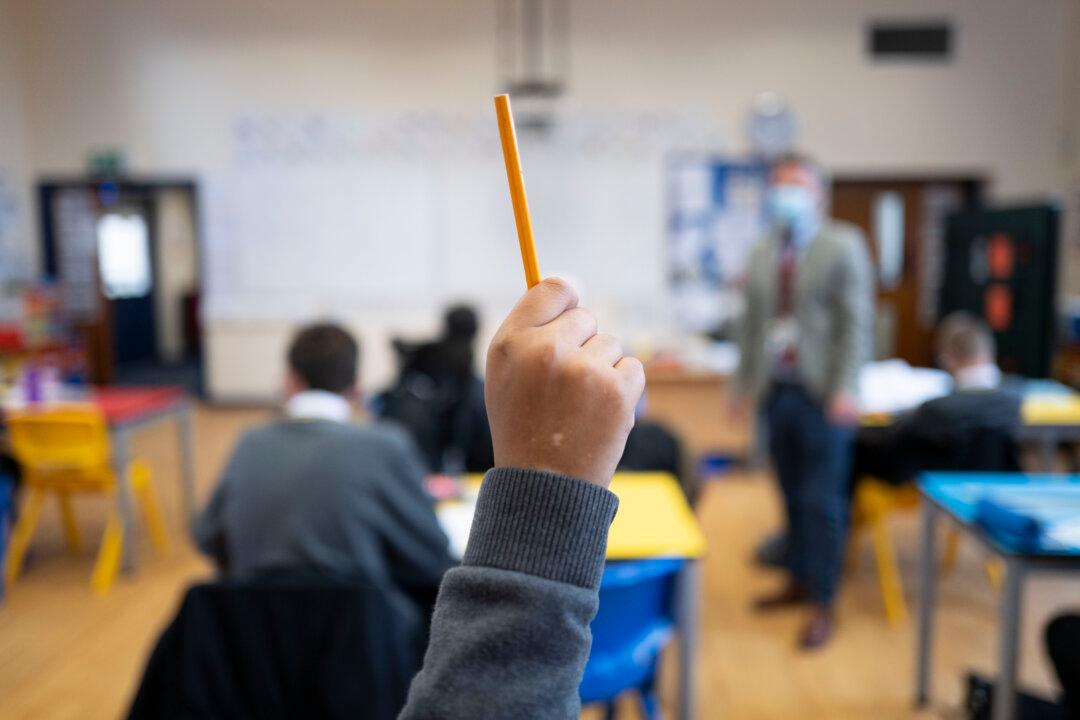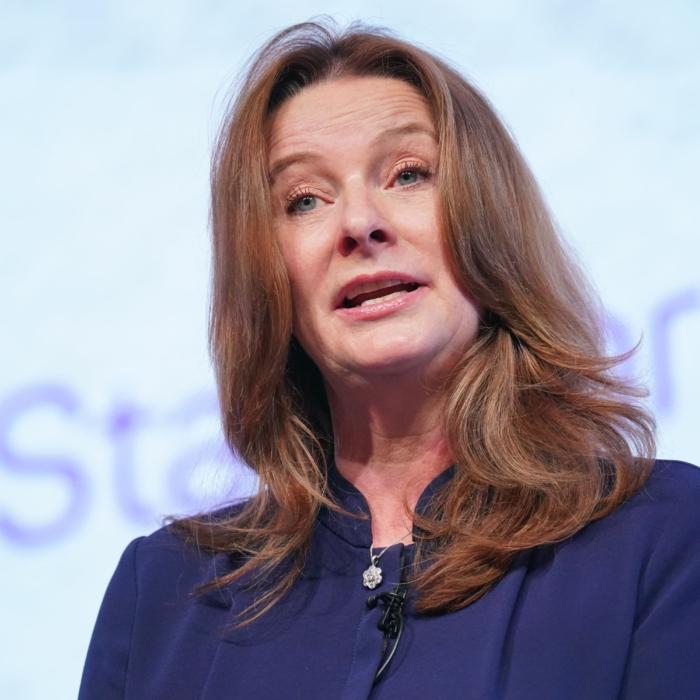The party that wins the general election will face a “painful set of choices” over school funding, with “immediate spending pressures” including special education needs provision and repairs to school buildings, a think tank said on Tuesday.
The Institute for Fiscal Studies (IFS) estimate that school costs will grow by 4 percent in 2024, compared with economy-wide inflation of 1 percent. The growth is driven by increases in staff pay and rising food and energy costs, the economists said.
The analysis, funded by the Nuffield Foundation, also said that there has been no real-terms growth in school spending per pupil in 14 years in England, which the IFS called “historically unusual.”
Luke Sibieta, IFS research fellow and report author, said in a press release: “Looking to the coming parliament, policymakers are caught between a rock and a hard place. On current plans, many other areas of public service spending appear to be facing cuts under either a Conservative or a Labour government.”
The report predicts a 5 percent fall in pupil numbers, which “could generate savings of £3.5 billion by 2028.”
‘Spiralling’ Costs of Special Needs Provision
Mr. Sibieta said one of the issues on the “growing list of pressures on school spending” is the “spiralling cost” of special educational needs provision.The report found that the number of pupils assessed as having the highest levels of special educational needs has increased by 60 percent, from around 220,000 in 2015 to 360,000 in 2022. This was driven mostly by a “near-doubling” in the number of children with emotional and mental health needs, speech and language needs, and autistic spectrum disorders.
“This has placed huge pressure on school spending,” the report said, noting that the £3.5 billion increase in the high-needs budget has used up nearly half of the £7.6 billion increase in school spending since 2015.
There is also a “growing backlog” of repairs to schools. Capital spending on school buildings is low “in historic terms and low relative to needs.”
No Growth in Per Pupil Spend in 14 Years
Other key findings of the report pointed to there being no real-terms growth in school spending per pupil in in England in 14 years.The group of independent economists described three periods of per pupil spending since the 1970s.
Under the Conservative governments between 1979 and 1997, there was “modest growth,” where real-terms spend per pupil rose by about 1.4 percent annually in primary schools and by about 1 percent every year in secondary schools.
The education sector saw a period of “rapid growth” in spending from 1999 until 2010 under Labour, where the primary school spend grew annually by about 5.9 percent and secondary school spend by about 5.1 percent.
The IFS then described a “funding squeeze” since 2010, under the Conservative–Liberal Democrat coalition government until 2015 and the Conservative governments since then. Between 2010 and 2024, annual secondary school spending per pupil fell by about 0.5 percent per year on average and primary school spending increased by 0.7 percent.

The analysis noted that prior to 2010, “school spending per pupil was usually at a record level every year.”
“The fact that school spending per pupil was not at a record high between 2010 and 2023 is a reflection of the fact that we have just seen a historically unusual real-terms cut in spending per pupil,” the IFS report said.
The author noted that while per pupil spend is expected to be “at an equal historic high” in school year 2024–25, this still represents “a significant break in the long-run trend.”
Responding to the report, the National Association of Head Teachers (NAHT) has called on the next government to invest more in schools.
NAHT General Secretary Paul Whiteman said in a statement: “It would be hugely short-sighted for any incoming government to use falling pupil numbers as a reason to further cut spending, and instead we urge all political parties to restore education as a national priority.
“That means investing much more to tackle the crises facing our schools and ensuring they can offer all children the best possible learning environment without compromise or constraint.”
The Epoch Times approached the Conservative, Labour, and Liberal Democrat parties for comment.







